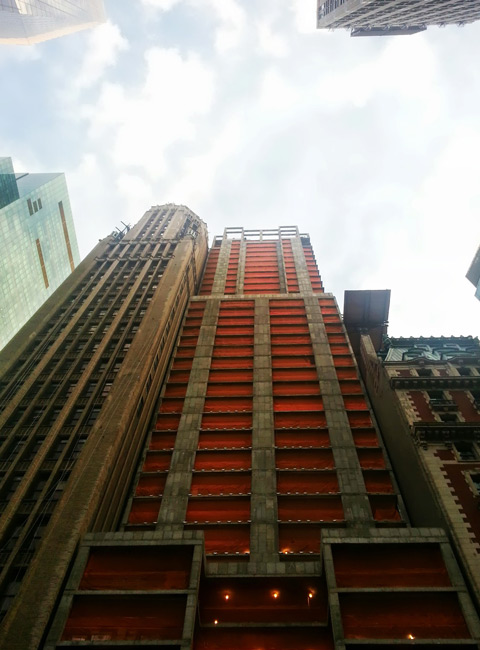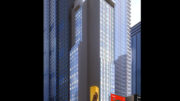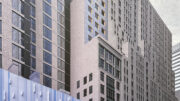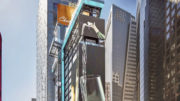If the renderings are any guide, the Peter Poon-designed building rising at 136 West 42nd street will be aesthetically superior to the eighteen other hotels listed on the architect’s website. Commentators here and elsewhere seem to generally agree on this point: given what the public have come to expect out of Poon’s office, the design of 136 West 42nd Street – the firm’s second Hilton Garden Inn in Midtown – is a relief.
The difference between 136 West 42nd Street and Poon’s previous work points towards several important questions for urbanists interested in encouraging aesthetically pleasing growth. What set of forces lead architects to produce better designs? Presumably it is in part a matter of money, measured in terms of dollars per square foot made available in the budget. We can’t necessarily assume this is true, as some architects are able to design well under tight budget constraints. But if we do assume that cost is at the heart of the matter, it would be good to know exactly how much it costs per square foot – on average – to permit an architect to elevate his or her design from awful to average, or from average to above average, and so-on.
More detailed knowledge of the forces that lead to better design, as well as knowledge of the additional costs necessary for such design would allow us to consider whether and how developers might be incentivized to produce buildings that are more aesthetically pleasing. In the language of economics, such actions would serve to correct a market failure: the ‘invisible hand model’ that aligns self-interest with the public interest in much of the capitalist system is not evident in much of the market for architectural design in the U.S. today. Skimping on design costs often if not always saves developers more money upfront than down the road. Thus, developers often impose negative externalities on the public, and it is the job of government to “internalize” those externalities, i.e. to make it financially worthwhile for developers to build better-designed buildings and thus align their private interests with the public good.
Some may argue that it is impossible for the government to incentivize good design since what constitutes good design is subjective. That may be true if we compare modernist to neo-traditional designs, but most would be in agreement about the general unattractive state common to most budget-minded Midtown hotels. If public policy can be used to nudge developers away from the outsized motor lodges towards designs approximating the benign 136 West 42nd Street, we may all be better off.
Subscribe to the YIMBY email newsletter and receive the latest new development news in your inbox., and follow New York YIMBY on Instagram and Twitter for information in real time.
Subscribe to YIMBY’s daily e-mail
Follow YIMBYgram for real-time photo updates
Like YIMBY on Facebook
Follow YIMBY’s Twitter for the latest in YIMBYnews





